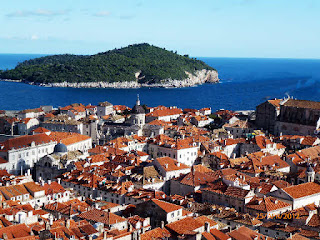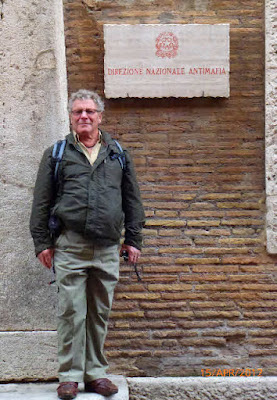Dubrovnik’s city walls are intact, dating mainly from the 12th
and 13th centuries although extended and repaired many times subsequently.
A great way of checking out the old city itself is to walk the full circuit of these
battlements. There are some panoramic views of the re-roofed buildings in the
town especially from the top of the fortress dominating the northern side
looking in the direction of the sea.
Back down at street level, the town is laid out in a grid pattern
resulting from the substantial rebuild following the earthquake of 1667 when
5,000 inhabitants perished. Dubrovnik also received a severe battering when it
was shelled by Serbian forces during the Homeland War as it is known here, from
November 1991 to May 1992. The destruction of that time has been so well
repaired you would not realise that there had been any damage. The photo below
shows the main street that contains the expected typical tourist shops, but quite
reasonable quality and prices (i.e. we’ve seen a lot worse!)
There are some interesting historic buildings that predate the
earthquake, for example the Sponza Palace and the municipal bell tower in the
next photo. The Sponza Palace was once the city’s customhouse and mint, with an
inscription inside designed to deter merchants from cheating on weight: “When I
weigh goods God weighs me”
The bell tower contains some detailed figures that strike the bell on
the hour and, so my guidebook tells me, are known as the “Greenies” on account
of their weathered copper colour. They are however copies of the 15th
century originals.
On either side of the main thoroughfare, the parallel streets run on
higher and higher levels, especially heading for the North Gate, the exit
needed to catch the bus back to the campsite. Take a look at the one we plodded
up. It looks pretty at the start and pretty exhausting at the top.
The overall strong defensive position of the town is best shown in this
last photo, taken from the road leading out of Dubrovnik. Unfortunately, it’s
looking towards the sun but the circuit of the massive walls can be clearly seen
and the characteristic red roofs. Invaders these days are confined to tourists
and cruise ships, which are welcomed rather than repelled.
.











































